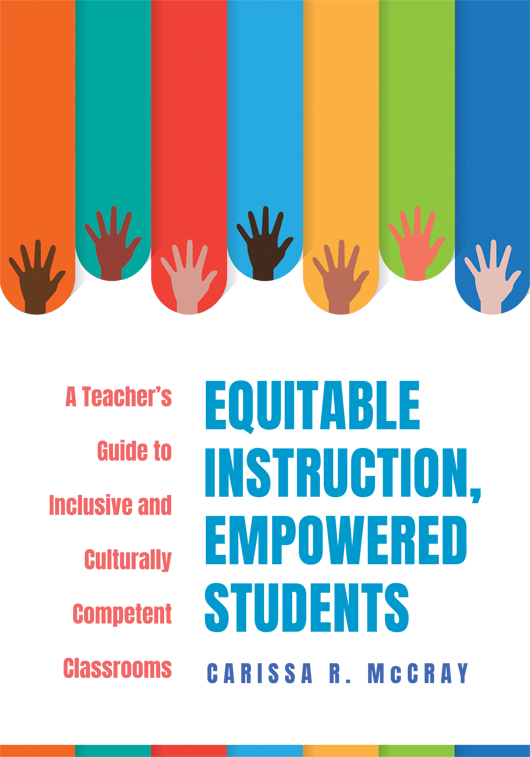Free Reproducibles
Equitable Instruction, Empowered Students
A Teacher’s Guide to Inclusive and Culturally Competent Classrooms
Author Carissa R. McCray offers instructional practices for teachers and educators that encourage students to tear down the injustices surrounding them by providing the tools to combat biases inherent in education.
Benefits
- Understand the injustices inherent in education
- Design a curriculum that fosters equity and justice
- Create a classroom environment where any student can feel safe and heard
- Enact both a mission and a vision in pedagogical practices
- Enable effective communication with both students and families
- Provide diverse assessments that address every type of learner
Table of Contents
Part 1: Building a Culture of Opportunity
Chapter 1: Becoming Culturally Competent
Chapter 2: Transforming the Curriculum
Chapter 3: Shaping Classroom Culture
Part 2: Speaking the Language of Freedom
Chapter 4: Articulating Your Purpose, Vision, and Mission
Chapter 5: Communicating With Students
Chapter 6: Engaging With Families
Part 3: Assessing at Cultural Intersections
Chapter 7: Understanding Intersectionality
Chapter 8: Diversifying Assessments
Chapter 9: Committing to Reflection, Professional Development, and Modification
Epilogue
Appendix: Aligning With Teacher Evaluations
REPRODUCIBLES
Chapter 2
- Figure 2.3: Template to Help Understand a Learner
- Creating a Personalized Curriculum
- Designing a Justice-Driven Curriculum for Students
Chapter 3
- Figure 3.1: Reflecting on Student Needs
- Love Languages in the Classroom
- Enhancing Body Language in the Classroom
Chapter 4
- Figure 4.1: Analyzing Your Reflections
- Figure 4.2: Exploring Your Access to Power
- Figure 4.4: Developing Your Vision
- Figure 4.6: Reflecting on Initiatives to Support Purpose and Vision
- My Purpose, Vision, and Mission Statements
- Individual Practices to Include and Exclude
- School and Community Practices to Include and Exclude
- District or Regional Practices to Include and Exclude
- National and International Practices to Include and Exclude
Chapter 5
Chapter 6
Chapter 9
- Figure 9.1: Reflecting on Achieving Purpose, Vision, and Mission
- Figure 9.3: Thought Process for Implementing Classroom Modification
- Using Your Evaluation Rubric
Appendix
SUGGESTED RESOURCES
Books
- Hierck, T. (2017). Seven keys to a positive learning environment in your classroom. Bloomington, IN: Solution Tree Press.
Websites

